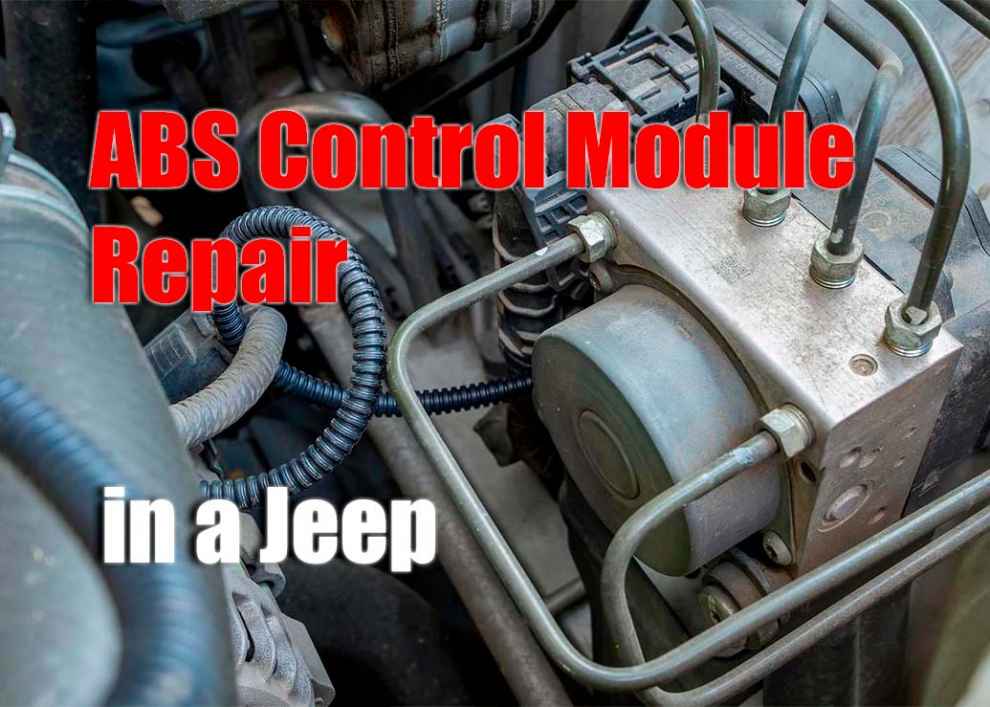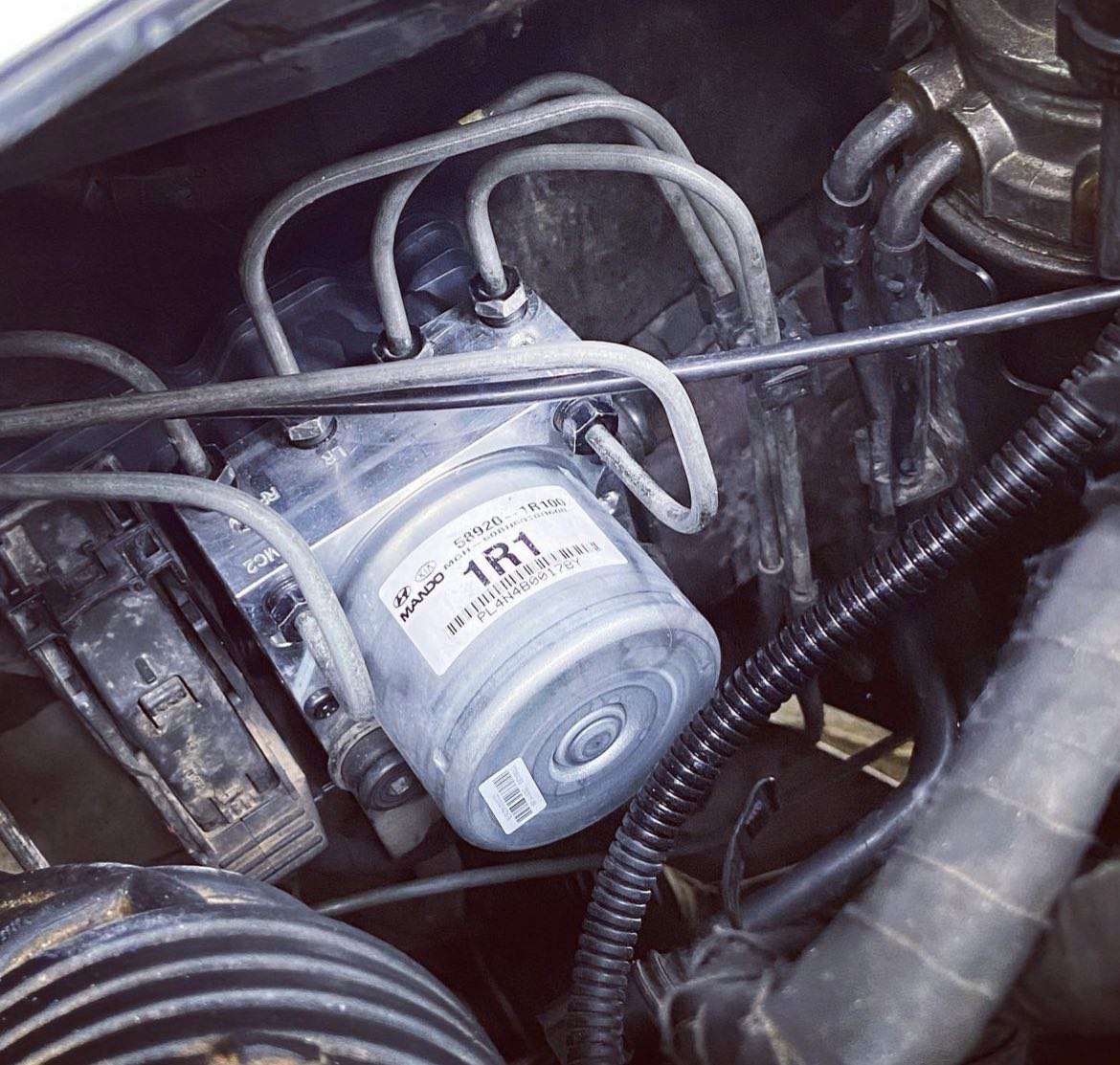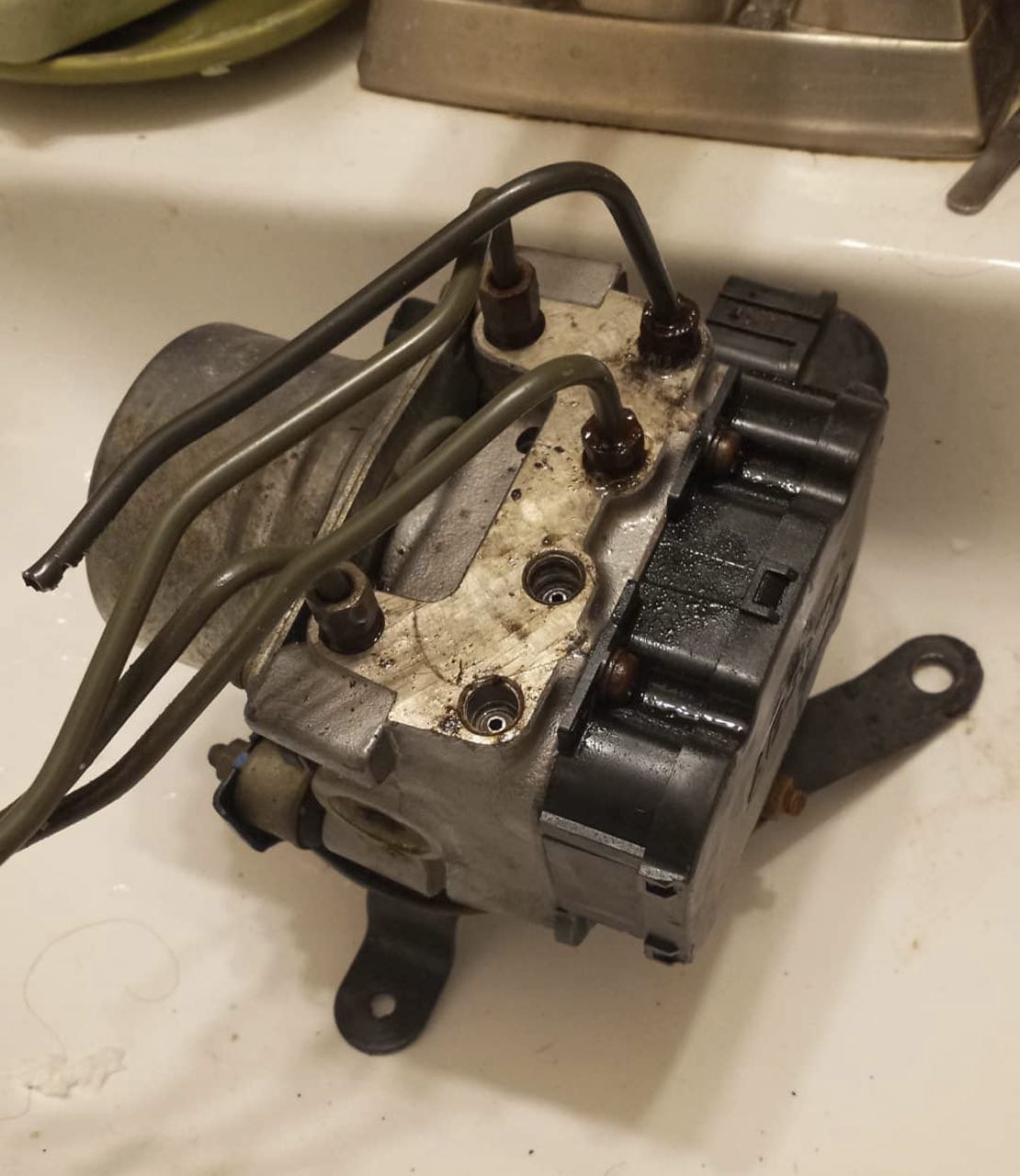If your Jeep’s ABS (Anti-lock Braking System) control module is malfunctioning, it can cause various issues ranging from warning lights illuminating the dashboard to reduced braking performance. It is important to repair or replace the ABS control module immediately if it is malfunctioning to ensure the vehicle’s safety and reliability. This article will cover all the necessary steps and instructions for repairing an ABS control module in a Jeep.
What Is an ABS Module?
The ABS control module is an electronic device that is responsible for controlling the ABS system. The main components of this system include wheel speed sensors, hydraulic valves, electric filters, and pumps that work together to modulate the brakes’ pressure as needed when sudden brake application occurs. The electronic sensors detect any changes in wheel rotation speed while the hydraulic valves apply extra pressure, if necessary, to keep all four wheels from locking up during sudden braking maneuvers.
Symptoms of a Malfunctioning ABS Module
A malfunctioning ABS module can cause issues with your vehicle’s braking system. The key signs that indicate a malfunctioning ABS module include:
-
ABS light on: The ABS warning light will usually illuminate on the dashboard when the control module is malfunctioning.
-
Hard braking: When you press down on the brake pedal, your brakes should be responsive and easy to stop; if you are experiencing unresponsive brakes or hard braking, this could be caused by a faulty ABS module.
-
Longer stopping distance: Due to the lack of responsiveness from the brakes, your car may take longer to come to a complete stop than usual. It can be dangerous when driving in traffic or on busy roads, so keep this in mind when checking for any potential issues with your vehicle’s braking system.
-
Grinding noises during braking: If you hear any grinding noises while applying pressure to the brake pedal, this may indicate an issue with either the calipers or the ABS module itself and needs to be addressed immediately for safety reasons.
-
Wheel lockup: If the ABS module is malfunctioning, your vehicle’s brakes may lock up when you press down on the pedal, causing your wheels to skid and making it difficult to control your car. It could lead to a dangerous situation and should be checked out immediately if suspected.
-
Unresponsive pedal: In some cases, you may notice that your brake pedal feels spongy and unresponsive when attempting to stop the vehicle, which a faulty ABS module can cause. Additionally, if you press on the brakes and they kick back at you, it can indicate something is wrong with the brakes or ABS module.
-
Sudden stops: When there is an issue with the anti-lock brake system, it can cause sudden stops, which will be felt in all four wheels of your vehicle instead of only two when using non-ABS brakes on icy roads, for example.
Diagnosing Problems with the ABS Module
Diagnosing ABS module problems requires a diagnostic scan tool. The scan tool is used to read the codes stored in the ABS module, which can provide information about issues with the system. The technician can then use this information to determine what repairs or replacements must be made to fix the problem. Additionally, it’s important to visually examine wiring and connectors to detect any loose connections or corrosion that might cause the issues. Finally, a thorough test drive should be performed to identify any symptoms that may have been missed during diagnostic scanning.
Removing and Replacing the ABS Control Module
Once you have determined that the ABS control module is malfunctioning, it must be removed and replaced with a new one. The first step is locating the module, which can typically be found in front of the firewall or the center console. Once you have identified its location, disconnect all electrical connections and mounting bolts so that it can come out of its housing. Then, attach the new module in place by connecting all electrical connections and mounting bolts back into their respective places. If any wiring needs to be replaced, use only genuine Jeep parts for the best performance and reliability.
 How to Reset the System After Replacing the ABS Control Module
How to Reset the System After Replacing the ABS Control Module
Resetting the system after replacing the ABS control module is relatively easy and can be done in just a few steps. The first step is to ensure that all electrical components are connected properly and in good working order. Once all connections have been checked, the second step is to turn off the vehicle’s ignition switch and disconnect its battery for at least one minute.
Then reconnect the battery and start the engine, allowing it to run for ten minutes without depressing pedals or engaging accessories. The third step involves checking for diagnostic trouble codes (DTCs). If no DTCs appear, then it means that the reset was successful. Otherwise, more troubleshooting will be needed before further diagnostics on specific systems or components. Finally, after completing these steps, take your vehicle out on a test drive to ensure everything is running smoothly again before hitting the road with confidence again. Also read about Best Light Bar for Jeep Wrangler.
Conclusion
A properly functioning ABS control module is essential to ensure your vehicle’s and its occupants’ safety. If you have determined that your Jeep’s ABS control module is malfunctioning, it should be repaired or replaced as soon as possible. This article provided an overview of how to fix an ABS control module in a Jeep, including the symptoms that indicate a malfunctioning system, diagnostic tools used to diagnose problems, and instructions for removing and replacing the component. Additionally, instructions were provided on how to reset the system after replacing the ABS control module. Following these steps can help ensure that your Jeep’s anti-lock brake system functions properly and safely for many years.

 ABS light on: The ABS warning light will usually illuminate on the dashboard when the control module is malfunctioning.
ABS light on: The ABS warning light will usually illuminate on the dashboard when the control module is malfunctioning. How to Reset the System After Replacing the ABS Control Module
How to Reset the System After Replacing the ABS Control Module
Add Comment